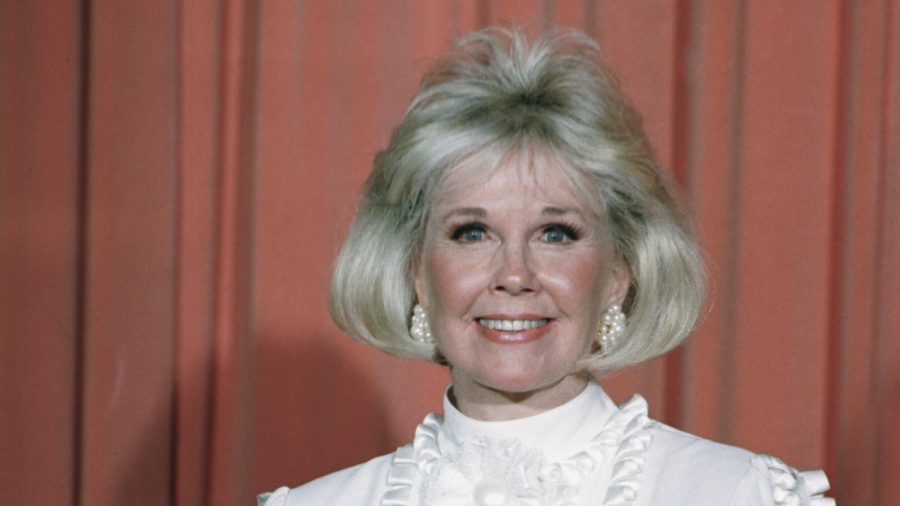Doris Day, the sunny blond actress and singer whose frothy comedic roles opposite the likes of Rock Hudson and Cary Grant made her one of Hollywood’s biggest stars in the 1950s and ’60s and a symbol of wholesome American womanhood, died Monday. She was 97.
In more recent years, Day had been an animal rights advocate. Her Doris Day Animal Foundation confirmed her death at her Carmel Valley, California, home.
Day “had been in excellent physical health for her age” but had recently contracted pneumonia, the foundation said in a statement. She requested that no memorial services be held and no grave marker erected.
With her lilting contralto, fresh-faced beauty and glowing smile, Day was a top box-office draw and recording artist known for comedies such as “Pillow Talk” and “That Touch of Mink,” as well as songs like “Whatever Will Be, Will Be (Que Sera, Sera)” from the Alfred Hitchcock film “The Man Who Knew Too Much.”
Tributes flowed on Monday after the sad news broke.
“Oh Ms. Day, A Cincinnati girl just like me. How many letters I drafted to you and didn’t send. I could never get it right but they all said the same thing, I love you. Millions did and do. Godspeed. RIP,” Sarah Jessica Parker said via Instagram.
Former Beatle Paul McCartney said Day was a “true star” who had “a heart of gold.”
“I had the privilege of hanging out with her on a few occasions. Visiting her in her Californian home was like going to an animal sanctuary where her many dogs were taken care of in splendid style. She had a heart of gold and was a very funny lady who I shared many laughs with,” McCartney said in a statement on his website.
“I was saddened to learn that Doris Day, who starred in a film I had written ‘The Thrill Of It All.’ had passed away at 97. Just a week ago, I contacted her and welcomed her to the 97 Year Actor’s Club,” Carl Reiner said via Twitter.
“She was a wonderful friend to us and a lovely and very talented lady,” singer Tony Bennett said on Twitter. “We will miss her beautiful smile.”
The Humane Society of the United States, of which The Doris Day Animal League is an affiliate, praised Day as a pioneer in animal protection.
In 1987, Day “founded one of the first national animal protection organizations dedicated to legislative remedies for the worst animal abuse,” said the league’s executive director, Sara Amundson. Her foresight “led to dozens of bills, final rules and policies on the federal level,” which helped end abusive videos, protect chimpanzees from invasive research and regulate the online sale of puppies.
“She is an icon in the animal protection world and will be sorely missed for her singular advocacy,” Amundson said.
Sentimental Journey
Day was born Doris von Kappelhoff on April 3, 1922, in Cincinnati and headed to California at age 14 to be a dancer. She abandoned that dream after her right leg was broken in an auto accident.
Day concentrated on singing and at 16 had a job with Les Brown, one of the top orchestra leaders of the day, and recorded her first hit, “Sentimental Journey,” with him. She changed her surname at the suggestion of a band leader who heard her sing “Day by Day.”
At 17, Day married Al Jorden, a trombone player who she later claimed beat her. Her only child, son Terry, was born in 1942, and the couple divorced the following year.
Day‘s movie debut, “Romance on the High Seas” in 1948, was a hit.
A series of musicals followed with Day often playing a singer trying to break into the entertainment world: “My Dream Is Yours” in 1949, “It’s a Great Feeling” in 1949 and “Tea for Two” in 1950.
In 1953, she landed the title role of “Calamity Jane,” and success continued in 1955 as she teamed with Frank Sinatra for the musical “Young at Heart” and with James Cagney for the drama “Love Me or Leave Me.” She expanded her range again in Alfred Hitchcock’s remake of his own “The Man Who Knew Too Much,” which co-starred Jimmy Stewart.
Day returned to light comedy in 1957 with “The Pajama Game” and two years later first joined forces with Hudson for “Pillow Talk,” her most popular movie and the one that earned her an Oscar nomination.
She and Hudson made some of the most popular – and profitable – movies of the early 1960s, including “Lover Come Back,” “Move Over Darling” and “Send Me No Flowers.”
Financial Troubles
In 1951 Day married agent Martin Melcher and after his 1968 death, she found he had left her nearly penniless. She had a nervous breakdown in 1974 and then won $22 million in damages from Melcher’s attorney and other associates who had mismanaged her money.
New success came, however, with “The Doris Day Show” on television, which ran for four seasons. Day did not learn until after Melcher’s death that he had committed her to do the show and she was initially reluctant to do it.
In 1976, Day married restaurant owner Barry Comden but they also divorced.
After retiring from performing, Day worked mainly with the Doris Day Animal Foundation, helping abused animals. Her home in Carmel, California, was usually full of dogs and cats, mostly adopted strays.
She stayed away from entertainment circles for more than 20 years after accepting a lifetime achievement honor from Golden Globe organizers in 1989 but released a CD in 2011. Proceeds from the recording went to her animal foundation.
With additional reporting by Reuters.


